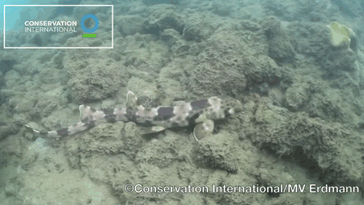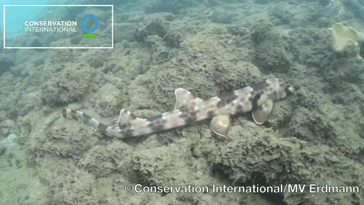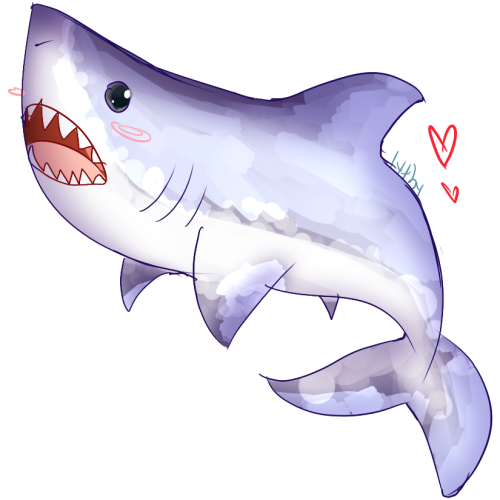Stages Of Decomposition





Stages of decomposition
Five general stages are used to describe the process of decomposition in vertebrate animals: Fresh, Bloat, Active and Advanced Decay, and Dry/Remains. The general stages of decomposition are coupled with two stages of chemical decomposition: autolysis and putrefaction. These two stages contribute to the chemical process of decomposition, which breaks down the main components of the body.
Fresh
The fresh stage begins immediately after the heart stops beating.[5] Since blood is no longer being pumped through the body it drains to the dependent portions of the body, under gravity, creating an overall bluish-purple discolouration termed livor mortis or, more commonly, lividity. Shortly after death, within three to six hours, the muscular tissues become rigid and incapable of relaxing which is known as rigor mortis. From the moment of death, the body begins losing heat to the surrounding environment, resulting in an overall cooling called algor mortis.
Once the heart stops, chemical changes occur within the body and result in changes in pH, causing cells to lose their structural integrity. The loss of cell structure brings about the release of cellular enzymes capable of initiating the breakdown of surrounding cells and tissues. This process is known as autolysis. Visible changes caused by decomposition are limited during the fresh stage, although autolysis may cause blisters to appear at the surface of the skin.
Oxygen present in the body is quickly depleted by the aerobic organisms found within. This creates an ideal environment for the proliferation of anaerobic organisms. Anaerobic organisms, originating in the gastrointestinal tract and respiratory system, begin to transform carbohydrates, lipids, and proteins, to yield organic acids (propionic acid, lactic acid) and gases (methane, hydrogen sulphide, ammonia). The process of microbial proliferation within a body is referred to as putrefaction and leads to the second stage of decomposition, known as bloat.
Blowflies and flesh flies are the first carrion insects to arrive, and seek a suitable oviposition site.
Bloat
The bloat stage provides the first clear visual sign that microbial proliferation is underway. In this stage, anaerobic metabolism takes place, leading to the accumulation of gases, such as hydrogen sulphide, carbon dioxide, and methane. The accumulation of gases within the bodily cavity causes the distention of the abdomen and gives a cadaver its overall bloated appearance. The gases produced also cause natural liquids and liquefying tissues to become frothy. As the pressure of the gases within the body increases, fluids are forced to escape from natural orifices, such as the nose, mouth, and anus, and enter the surrounding environment. The buildup of pressure combined with the loss of integrity of the skin may also cause the body to rupture.
Intestinal anaerobic bacteria transform haemoglobin into sulfhemoglobin and other colored pigments. The associated gases which accumulate within the body at this time aid in the transport of sulfhemoglobin throughout the body via the circulatory and lymphatic systems, giving the body an overall marbled appearance.
If insects have access, maggots hatch and begin to feed on the body’s tissues. Maggot activity, typically confined to natural orifices and masses under the skin, causes the skin to slip and hair to detach from the skin. Maggot feeding, and the accumulation of gases within the body, eventually leads to post-mortem skin ruptures which will then further allow purging of gases and fluids into the surrounding environment. Ruptures in the skin allow oxygen to re-enter the body and provide more surface area for the development of fly larvae and the activity of aerobic microorganisms. The purging of gases and fluids results in the strong distinctive odours associated with decay.
Active decay
Active decay is characterized by the period of greatest mass loss. This loss occurs as a result of both the voracious feeding of maggots and the purging of decomposition fluids into the surrounding environment. The purged fluids accumulate around the body and create a cadaver decomposition island (CDI). Liquefaction of tissues and disintegration become apparent during this time and strong odours persist. The end of active decay is signaled by the migration of maggots away from the body to pupate.
Advanced decay
Decomposition is largely inhibited during advanced decay due to the loss of readily available cadaveric material. Insect activity is also reduced during this stage. When the carcass is located on soil, the area surrounding it will show evidence of vegetation death. The CDI surrounding the carcass will display an increase in soil carbon and nutrients, such as phosphorus, potassium, calcium, and magnesium; changes in pH; and a significant increase in soil nitrogen.
Dry/remains
During the dry/remains stage, the resurgence of plant growth around the CDI may occur and is a sign that the nutrients present in the surrounding soil have not yet returned to their normal levels. All that remains of the cadaver at this stage is dry skin, cartilage, and bones, which will become dry and bleached if exposed to the elements. If all soft tissue is removed from the cadaver, it is referred to as completely skeletonized, but if only portions of the bones are exposed, it is referred to as partially skeletonised.
More Posts from Llamaslikesciencetoo and Others

The smoky pink core of the Omega Nebula


The epaulette shark (Hemiscyllium ocellatum) is a small species of longtailed carpet shark found in shallow, tropical waters (typically coral reefs or in tidal pools). The common name of this shark comes from the very large, white-margined black spot behind each pectoral fin, which are reminiscent of military epaulettes. Something unique (and adorable!) about these sharks is that rather than swimming, sometimes they “walk” by wriggling their bodies and pushing with their paired fins.

Sawfish sharks,of the order (Pristiformes) of rays characterized by a long, narrow, flattened rostrum, or nose extension, lined with sharp transverse teeth, arranged so as to resemble a saw. All species of sawfish are endangered or critically endangered due to over fishing or habitat loss.

Photograph of a pregnant uterus (womb) from a New Forest pony, approximately five months into the pregnancy. The developing pony (fetus) is outside the uterus but remains attached by its membranes and umbilical cord. The bent back legs of the fetus are sticking out from the membranes (top right-hand side). The uterus has been cut open to reveal its vast blood supply, which is visible on the inner surface. This historical specimen is from a cull animal that happened to be pregnant at the time. It is preserved in formalin in a Perspex container and was photographed in the Anatomy Museum of the Royal Veterinary College in London. (Credit: Michael Frank, Royal Veterinary College / Wellcome Images)
Shark Documentary: a dead shark!!
Me: oh no
Shark Documentary: something kILLED IT!!
Me: it was an orca
Shark Documentary: WHAt killed this SHARK??!
Me: orca
Shark Documentary: It was not a man!!!
Me: orca
Shark Documentary: *flips a shark upside down*
Me: ok
Shark Documentary: there are some orcas living nearby
Me: yes good
Shark Documentary: what could this mean??
Me: orcas killed the shark
Shark Documentary: did orcas kill this shark??!
Me: yes
Shark Documentary: orcas killed the shark!!
Me: fascinating

protect these precious sea children

Physical Activity Linked to Reduced Alzheimer’s Risk and Greater Gray Matter Volume
Whether they jog, swim, garden or dance, physically active older persons have larger gray matter volume in key brain areas responsible for memory and cognition, according to a new study by researchers at the University of Pittsburgh School of Medicine and UCLA.
The research is in Journal of Alzheimer’s Disease. (full open access)

The human brain in comparison with those of other animals. The diverse yet unified pattern of nature never fails to amaze me.



A study of Saurian morphology: Pseudosuchia (part 2)
Look at that. It’s a croc. With flippers. Yes it did actually exist.
Note to self: learn to schedule these things better. Coming back home after a long day of work to find out I had to do something with a ton of scales is NOT. AT. ALL. FUN. I’ll have to fix dem legs one day but right now I just can’t be bothered.
Edit: oh hey that sucker doesn’t look as bad as I originally had in mind.
- - -
Will Art for Science · Find me elsewhere


Green burial practices could help the environment
Traditional caskets are hundreds of pounds of wood, metal and whatever cushioning goes inside.. Burial vaults, the enclosures that barricade each casket from the elements, can be around 3,000 pounds of cement, sometimes steel. One gallon of toxic embalming fluid is used per 50 pounds of body. Add it all up and you’ve got around two tons of material per body chilling in the earth forever.
Despite the downsides of burial, not everyone wants to be cremated. Plus, there’s plenty of evidence suggesting the energy it takes to burn a body down wreaks significant damage on the environment.
Green burial could be the solution. The idea is to make as little an impact on the natural environment of the burial site as possible.
Follow @the-future-now
-
 call-me-nibs liked this · 9 months ago
call-me-nibs liked this · 9 months ago -
 thescienceofdeductionn liked this · 1 year ago
thescienceofdeductionn liked this · 1 year ago -
 ravensofmorgana68 liked this · 2 years ago
ravensofmorgana68 liked this · 2 years ago -
 answrs liked this · 2 years ago
answrs liked this · 2 years ago -
 enby-opossums liked this · 2 years ago
enby-opossums liked this · 2 years ago -
 cowboykip liked this · 2 years ago
cowboykip liked this · 2 years ago -
 earthenremains reblogged this · 2 years ago
earthenremains reblogged this · 2 years ago -
 delightingintragedy reblogged this · 2 years ago
delightingintragedy reblogged this · 2 years ago -
 that-tooth-stealing-fuck liked this · 4 years ago
that-tooth-stealing-fuck liked this · 4 years ago -
 theedgeofthe-universe liked this · 4 years ago
theedgeofthe-universe liked this · 4 years ago -
 earthenremains reblogged this · 4 years ago
earthenremains reblogged this · 4 years ago -
 entity-mooshu liked this · 4 years ago
entity-mooshu liked this · 4 years ago -
 cullingcatfish reblogged this · 5 years ago
cullingcatfish reblogged this · 5 years ago -
 thevonerichs liked this · 5 years ago
thevonerichs liked this · 5 years ago -
 floppacoolata liked this · 5 years ago
floppacoolata liked this · 5 years ago -
 moi-lecosmique reblogged this · 5 years ago
moi-lecosmique reblogged this · 5 years ago -
 keenengineerstudent-b8d93b9f liked this · 5 years ago
keenengineerstudent-b8d93b9f liked this · 5 years ago -
 funeraryfae liked this · 5 years ago
funeraryfae liked this · 5 years ago -
 chronicalienist liked this · 5 years ago
chronicalienist liked this · 5 years ago -
 stellaltumi liked this · 5 years ago
stellaltumi liked this · 5 years ago -
 electronicmoneymongeralien-blog liked this · 5 years ago
electronicmoneymongeralien-blog liked this · 5 years ago -
 fearl3ss liked this · 5 years ago
fearl3ss liked this · 5 years ago -
 cremationbone reblogged this · 5 years ago
cremationbone reblogged this · 5 years ago -
 marthaunt0t liked this · 5 years ago
marthaunt0t liked this · 5 years ago -
 insanecleanposse liked this · 5 years ago
insanecleanposse liked this · 5 years ago -
 theexorcistlives liked this · 5 years ago
theexorcistlives liked this · 5 years ago -
 floating-plants liked this · 5 years ago
floating-plants liked this · 5 years ago -
 rottingkadaver reblogged this · 5 years ago
rottingkadaver reblogged this · 5 years ago -
 flowersinthegroundgrow liked this · 5 years ago
flowersinthegroundgrow liked this · 5 years ago -
 0031576 liked this · 5 years ago
0031576 liked this · 5 years ago -
 moth-man-exe reblogged this · 5 years ago
moth-man-exe reblogged this · 5 years ago -
 deaths-alpha-misstress liked this · 5 years ago
deaths-alpha-misstress liked this · 5 years ago -
 haletotheking24 liked this · 5 years ago
haletotheking24 liked this · 5 years ago -
 pasteldritchwhispers liked this · 5 years ago
pasteldritchwhispers liked this · 5 years ago -
 crypticvoidghost reblogged this · 5 years ago
crypticvoidghost reblogged this · 5 years ago -
 peachyfaggot liked this · 5 years ago
peachyfaggot liked this · 5 years ago -
 infplease-love-me liked this · 5 years ago
infplease-love-me liked this · 5 years ago -
 arcadepunk liked this · 5 years ago
arcadepunk liked this · 5 years ago
Mainly interested in ecology, but also the entirety of science.
179 posts